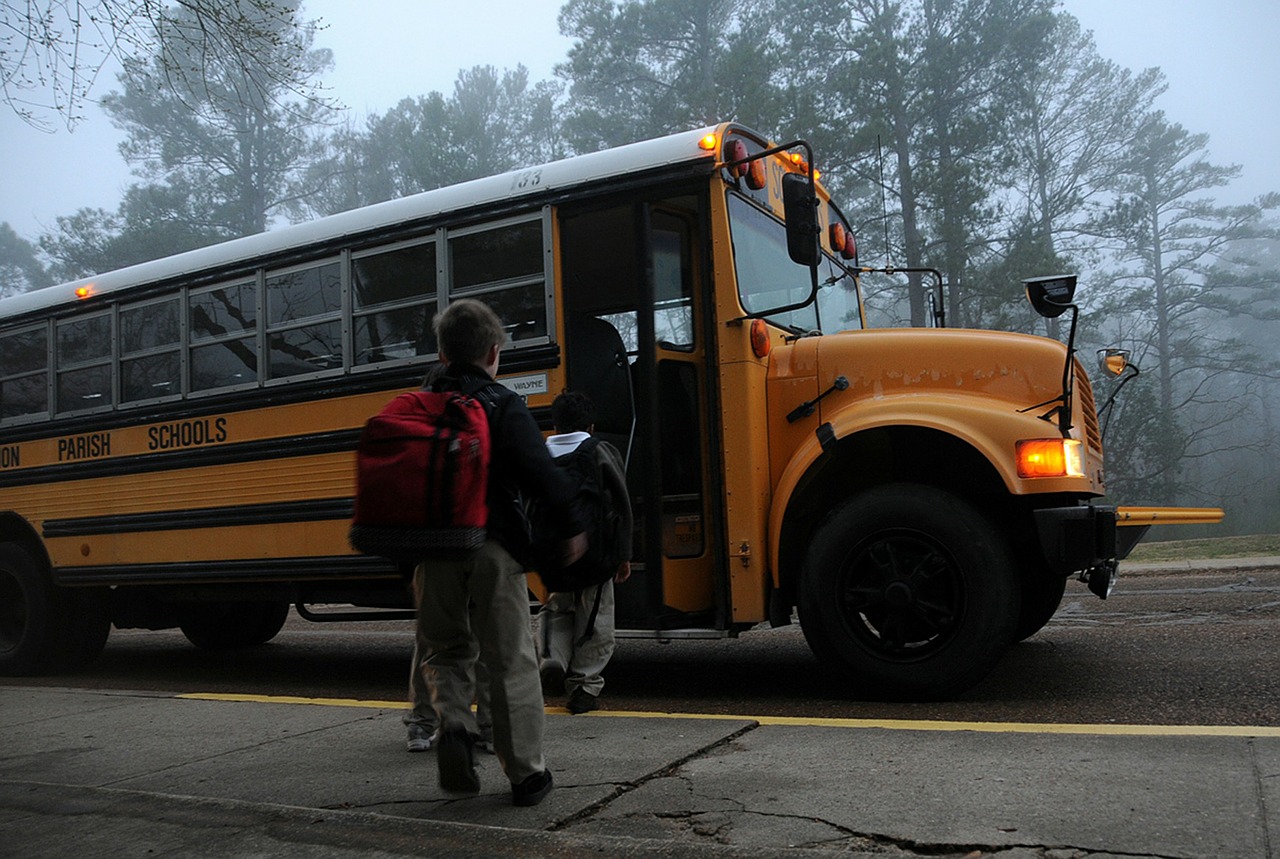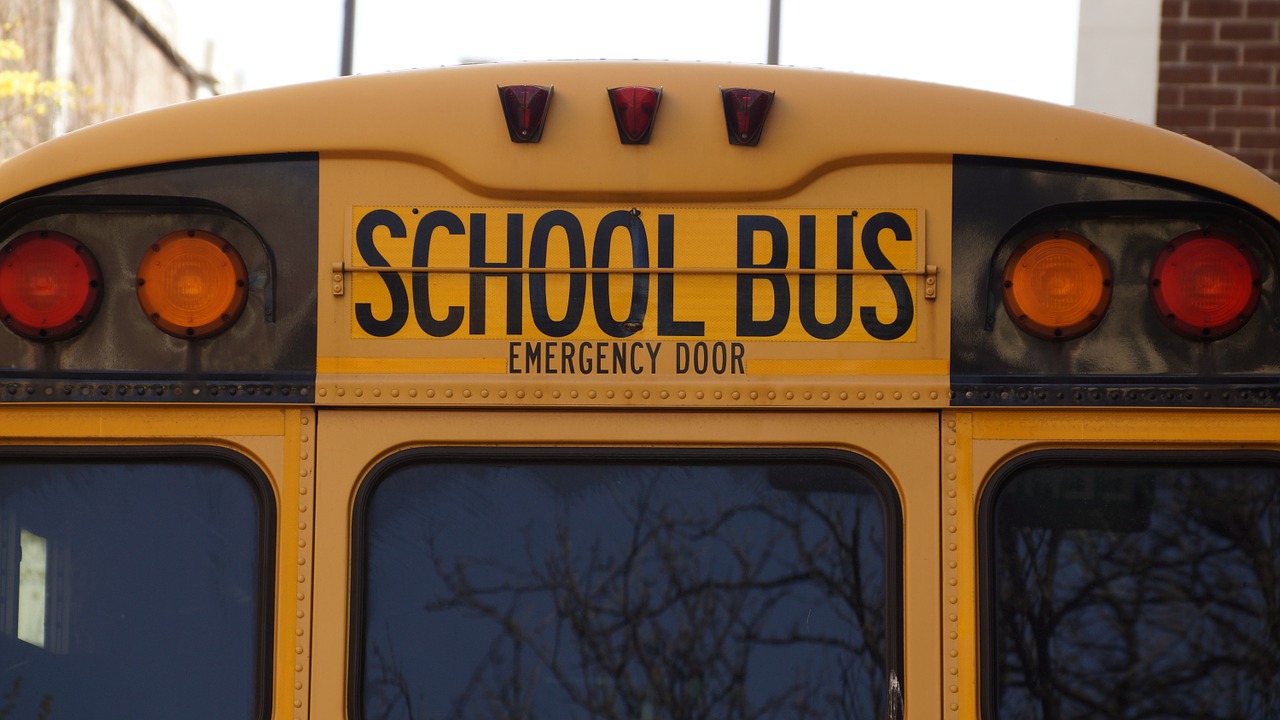 The largest mass transit system in the country isn’t commercial bus, train, or air service — or even all those systems combined. The largest mass transit system includes 500,000 vehicles and transports 25 million passengers daily and it is yellow – National School Bus Yellow, to be precise.
The largest mass transit system in the country isn’t commercial bus, train, or air service — or even all those systems combined. The largest mass transit system includes 500,000 vehicles and transports 25 million passengers daily and it is yellow – National School Bus Yellow, to be precise.
It’s hard to argue the importance of school transportation — if students can’t get to school, they can’t learn. Yet, despite the sheer magnitude of the system and its fundamental role in facilitating learning for millions of American schoolchildren each day, transportation is often an afterthought in education policy design.
School transportation is most often planned in reaction to other decisions about how, when, and where schools operate and for whom. Further, it isn’t really treated as a system. Rather, it’s a series of geographically adjacent and mostly self-contained units based on somewhat arbitrary jurisdictional lines. These units operate largely in isolation from one another and other community transportation infrastructure, placing them completely outside of most long-range transportation and community planning processes.
For many families, students, schools, and districts, it’s also not working particularly well. School transportation creates significant challenges for several reasons:
- It is costly. The cost of student transportation has increased by an average 75 percent per student since the 1980s. At the same time, dedicated state funding to support transportation costs has stagnated, forcing districts to spend a growing share of local funds on transportation costs. This may mean dipping into funds that otherwise could be spent on teachers, materials, and other resources that contribute directly to instruction—a difficult tradeoff for school districts that exist for the purpose of educating kids.
- It is damaging to the environment. Investments in technologies like alternatively fueled school buses lag behind the bus industry overall. In 2014, only about 6 percent of school buses purchased in the U.S. and Canada ran on alternative fuels, compared to 35 percent of public transit buses in the U.S. alone. The higher upfront cost of alternative fuel buses is a significant barrier to cash-strapped school districts, even though they are less expensive to run over the life of the vehicle and pay dividends in air quality impact and health.
- It is often inefficient. Multiple competing, but legitimate priorities and interests complicate school transportation policy: student safety, the rights of students with special needs, cost, and environmental impact combine to create a web of conflicting interests. Federal and state regulations provide protections, but in some cases limit how schools can design service models to address unique circumstances and support their educational mission. Furthermore, data routinely collected in other transportation systems to drive efficient operations (e.g., ridership trends, on-time arrivals, ride times, capacity) are simply not collected by most school transportation systems.
These challenges raise questions about how to coordinate school transportation systems better within the infrastructure of communities, especially when coupled with changes to the way many communities organize and operate their schools. How can we begin to think of student transportation in concert with other connected systems so that they work better for everyone?

In many very large, urban districts, transit systems play a significant role in school transportation—often serving as the primary mode of transportation for older students, in particular. But in most communities across the country that are outside of major urban areas, school transportation operates completely parallel to – and separate from –municipal and regional transportation systems. In a recently published report, my colleague Phillip Burgoyne-Allen and I could only find two communities where school districts even had a seat at the table in regional transportation planning conversations, much less engaged in actual joint planning efforts.
At a minimum, these cross-sector conversations could inform thinking and planning in the context of both the school sector and the broader community. And taking it a step further, both systems could identify areas for collaboration, share resources and competencies, and develop and maintain transportation infrastructure that supports schools and families well.
As an example, in Hillsborough County, Florida, the school board participates in a working group within the regional Metropolitan Planning Organization (MPO). The relationship began as an effort to at least share information and build awareness across both sectors of the transportation-related challenges and decisions occurring in each. One tangible benefit that has resulted — the MPO has built a traffic study for the school district into its planning activities. The information from this study will be invaluable to this fast growing district as it considers bell times, new school siting, and other decisions with transportation impact, not only for schools, but for the community as a whole.
The Hillsborough County collaboration is just beginning, and the traffic study is just one example of how the transportation sector can lend expertise to school planning.
But could it go further? Could school transportation become a regional responsibility, integrated into the overall transportation service of communities?
At the very least, it’s worth discussing—opportunities for partnership and collaboration, like in Hillsborough County could be found—and perhaps even lead to greater gains for schools, students, and communities.
The views expressed above are those of the author and do not necessarily reflect the views of the Eno Center for Transportation.

 The largest mass transit system in the country isn’t commercial bus, train, or air service — or even all those systems combined. The largest mass transit system includes 500,000 vehicles and transports 25 million passengers daily and it is yellow – National School Bus Yellow, to be precise.
The largest mass transit system in the country isn’t commercial bus, train, or air service — or even all those systems combined. The largest mass transit system includes 500,000 vehicles and transports 25 million passengers daily and it is yellow – National School Bus Yellow, to be precise.


